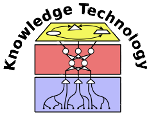One Minute Gradual Emotion Behavior Challenge
Affective systems have been used to categorize emotional expressions for the past two decades.
Most of these systems are based on Paul Ekman's categorization scheme, known as the six universal emotions:
Disgust, Fear, Happiness, Surprise, Sadness, and Anger. Although Ekman shows in his studies that these emotional
categories are commonly inferred from facial expressions by most people, the way we express ourself is more natural,
and thus, most of the times hard to categorize. Humans usually express themselves differently, sometimes even
combining one or more characteristics of the so-called universal emotions. This is somehow embedded in the dimensional
emotion representation, usually described as arousal and valence spaces.
Dealing with a set of restricted emotions, or a simple instantaneous emotion description, is a serious constraint for most applications
focused on any kind of human interaction. Humans have the capability to adapt their internal emotion representation to a newly perceived
emotional expression on the fly and use it to obtain a greater understanding of the emotional behavior of another person. This mechanism
is described as a developmental learning process and after observing or participating in different interactions, humans can learn how to
describe complex emotional behavior such as sarcasm, trust, and empathy.
Recent research trends within artificial intelligence, and even cognitive systems have approached computational models as a human-like
perception categorization task. However, most of the research in the area is still based on instantaneous expression categorization,
where the task is to describe a single emotion expression using different modalities. This diverges from the developmental aspect of
emotional behavior perception and learning.
In recent years many corpora on what is known as emotion recognition in the wild were released. All of these datasets, although very challenging,
are focused on instantaneous emotion categorization. This means that they set a specific label for a short-term (usually a couple of seconds)
emotion expression. There are corpora which have annotated interactions, such as the IEMOCAP, SEMAINE, and EmoReact, however, they
are limited to restricted and limited-context scenarios, which does not allow for the development of more naturalistic emotion description models.
Researchers have previously performed studies on long-term emotional behavior processing and learning, but most faced the problem of
lacking a challenging corpus with long-term emotional relations that were annotated using a rigorous methodology. If such a corpus were
available they would be able to evaluate their model and reproduce or compare their solutions' behaviors with the performance of others.
Thus, this challenge focuses on long-term emotional behavior categorization for the community working on contemporary cognitive-level affective
computing models. The One-Minute Gradual-Emotional Behavior dataset (OMG-Emotion dataset) provided during the challenge is a robust, complete, and challenging corpus which
could act as the basis for reaching the next level of context processing within the field of affective computing.
1. Published as creative-common videos in Youtube.






